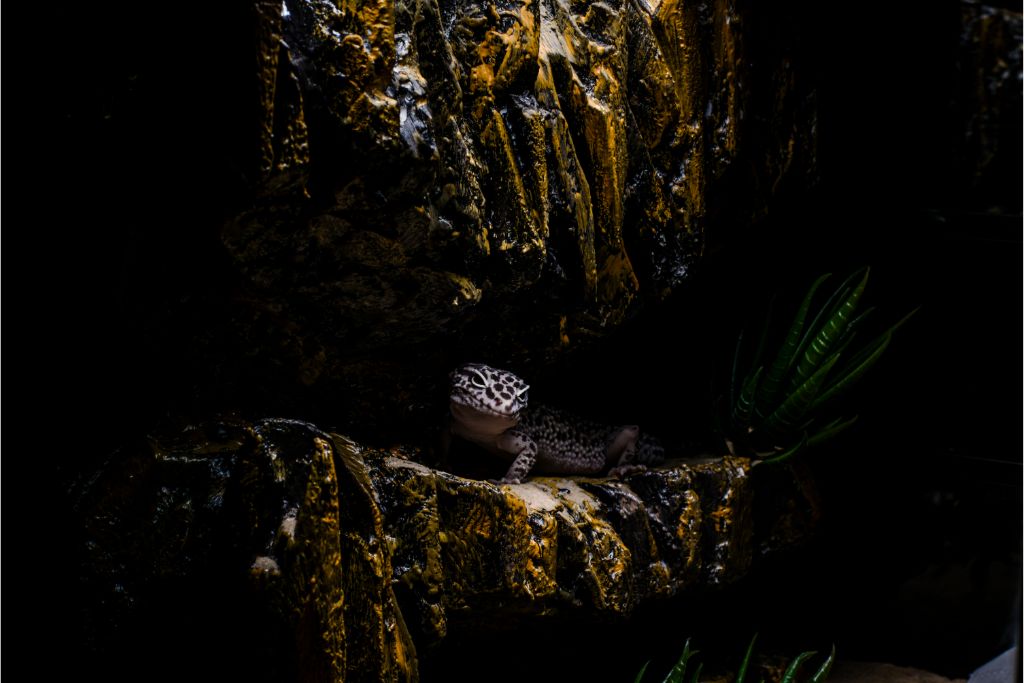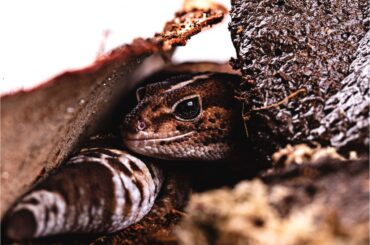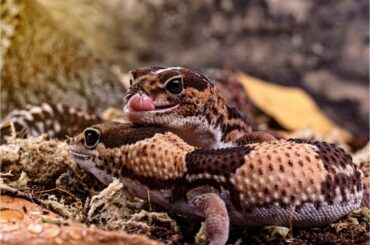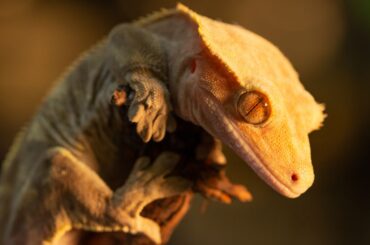Are you captivated by the idea of keeping a leopard gecko as your pet? Do you require assistance in understanding how to properly care for them and supply their fundamental needs within your home?
If your response is affirmative, you’re about to embark on an informative journey that not only addresses common inquiries about leopard geckos but also equips you with essential knowledge for successful pet ownership.
Leopard geckos have captured the hearts of pet enthusiasts due to their unique appearance and gentle disposition. However, their optimal well-being is achieved when their living conditions closely replicate their natural habitat. As a responsible pet owner, it’s vital to grasp that meeting their specific requirements is paramount for their overall health and contentment.
Within this comprehensive article, we’ll simplify the nuances of leopard gecko care by focusing on a pivotal aspect: creating the perfect habitat. Our attention will be devoted to expertly arranging a 20-gallon enclosure, emphasizing the crucial elements of an ideal leopard gecko environment, and providing you with all the essential insights.
Let’s dive into the details and break down the information into easily digestible sections, ensuring you’re fully prepared to offer top-notch care for your beloved leopard gecko.
Leopard Gecko Habitat Requirements
If plants from the Amazon couldn’t survive if they were to be transferred to the warm deserts of Africa, what more with living, breathing leopard geckos with only their scales to keep them safe from their new environment?
As a responsible leopard gecko owner, this is why you must replicate these animals’ environments in their natural habitat. To give you some ideas, here are the things that you should provide for them:
Enclosure Size
A 20-gallon tank perfectly balances space and manageable upkeep for a single leopard gecko. It offers enough room for movement while making maintaining proper temperatures and cleanliness within the enclosure easier.
Remember that while leopard geckos may be small, their habitat requirements are anything but, so investing in an appropriate tank is crucial to their well-being.
Substrate
In taking care of leopard geckos, you have to choose a safe and comfortable substrate. Remember that the substrate is where they dig around and play most of the time, so options like reptile carpet, paper towels, or tile are excellent choices, avoiding substrates that can cause impaction, such as loose sand.
Temperature Gradient
Leopard geckos are ectothermic creatures, meaning they depend on external heat sources to control their body temperature. It’s essential to establish a temperature gradient in their enclosure.
This involves maintaining a warm side at approximately 88-90°F (31-32°C) and a cooler side at around 75-80°F (24-27°C), which provides them with the ideal conditions for their well-being.
Heating and Lighting
Utilize an under-tank heating pad or a heat lamp to maintain the warm side’s temperature. Provide a hide with a heat source for your gecko to bask. A low-wattage UVB bulb can be beneficial but isn’t always necessary.
Hides
Offer at least two hides—one warm and one cooler—where your gecko can retreat for security and rest. These hide spots mimic the natural crevices that leopard geckos seek in the wild. For them to thrive in an artificial environment, you must simulate this detail.
Decoration and Enrichment
Add appropriate decor, such as rocks, branches, and artificial plants for climbing, hiding, and exploring. Ensure that these items are securely placed to prevent accidental falls.
Building the Perfect Habitat: Essential Components of a Leopard Gecko Starter Kit
Now that you’re eager to provide the best for your new scaly friend let’s explore the must-have components that will transform your 20-gallon enclosure into a cozy and stimulating leopard gecko haven.
Proper Enclosure – 20 Gallon Leopard Gecko Starter Kit
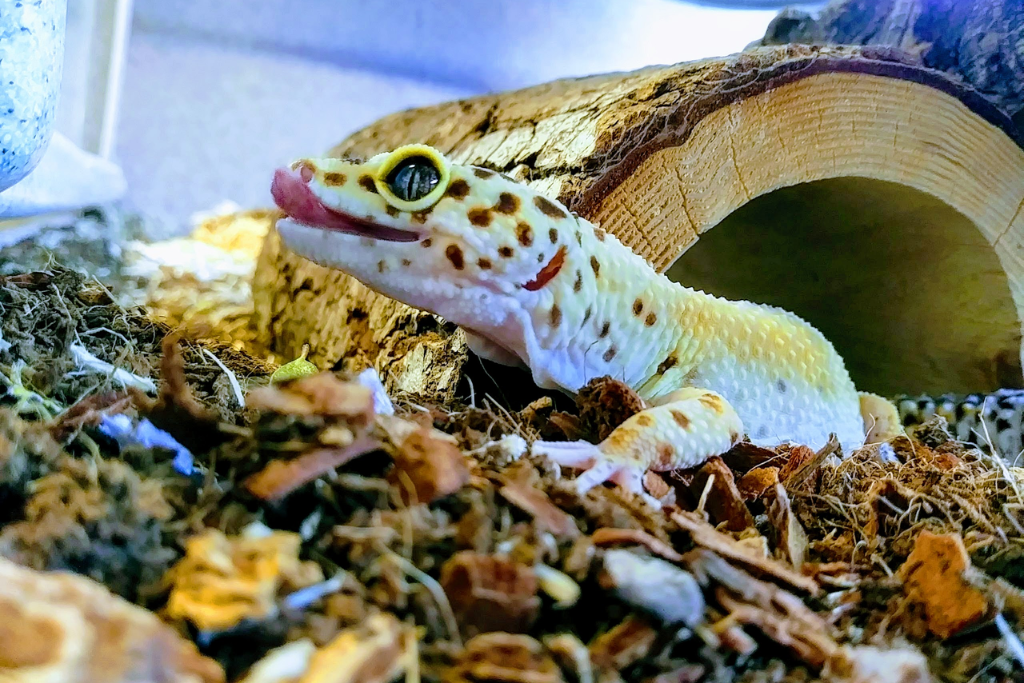
Creating a comfortable and safe home for your leopard gecko is crucial. To achieve this, selecting the appropriate enclosure is critical. The 20-gallon leopard gecko starter kit is an excellent option for your pet’s well-being.
The enclosure’s design is important. It should be spacious enough for your gecko to move around and find spots with the right temperatures. This ensures their comfort and overall health.
Vertical space matters, too, as leopard geckos enjoy climbing. Adding different levels to the tank allows them to explore and feel content. Proper ventilation is essential to prevent excessive humidity. Adequate airflow can be achieved through well-placed openings or a lid with small holes.
Safety is a top priority. Leopard geckos are curious and agile, so a secure lid is necessary to prevent them from escaping and getting into danger.
Choosing the right 20-gallon tank with appropriate size and safety features is the initial step in creating a suitable home for your leopard gecko. Providing them a secure and cozy environment will contribute to their happiness and well-being.
Heating and Lighting
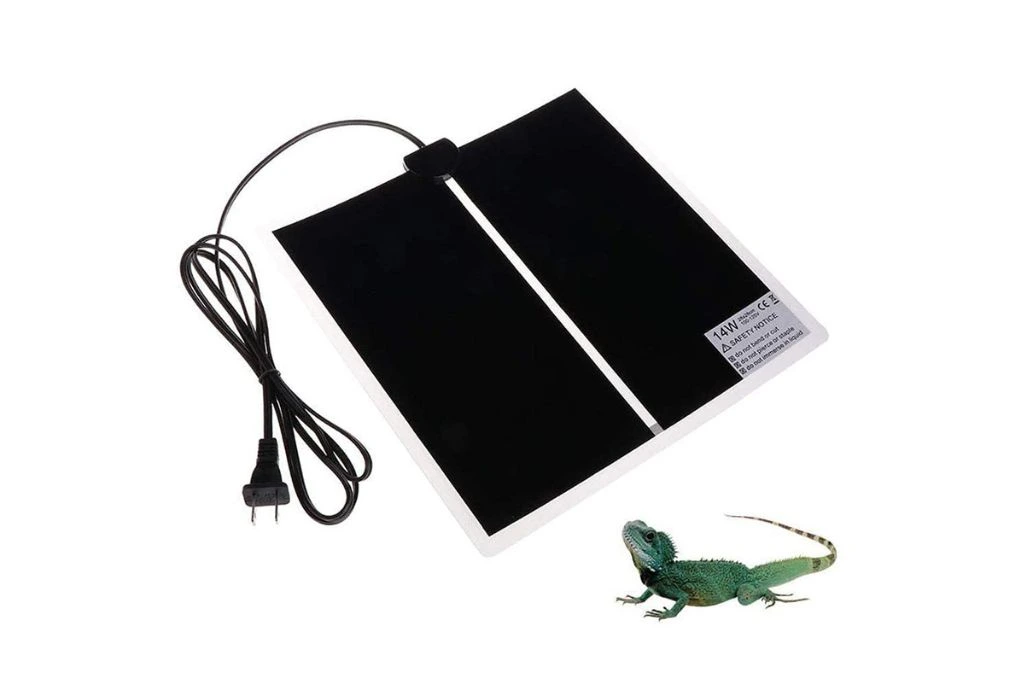
You can use heat lamps and heating pads to get the right temperatures. Put a heat lamp on one side of the tank to make a warm spot where they can bask. This area should be about 88-90°F (31-32°C).
On the other side, keep it cooler, around 75-80°F (24-27°C). A heating pad under the tank helps keep the temperature right and gives them a warm place to go.
These geckos are most active during dawn and dusk. In the wild, they get their UVB light during these times. Using a low-wattage UVB bulb can help them with calcium and bone health in captivity.
When you set up the right heat and light conditions, you’re making a home where your leopard gecko can act like it would in nature. This keeps them healthy and full of energy.
Substrate Options
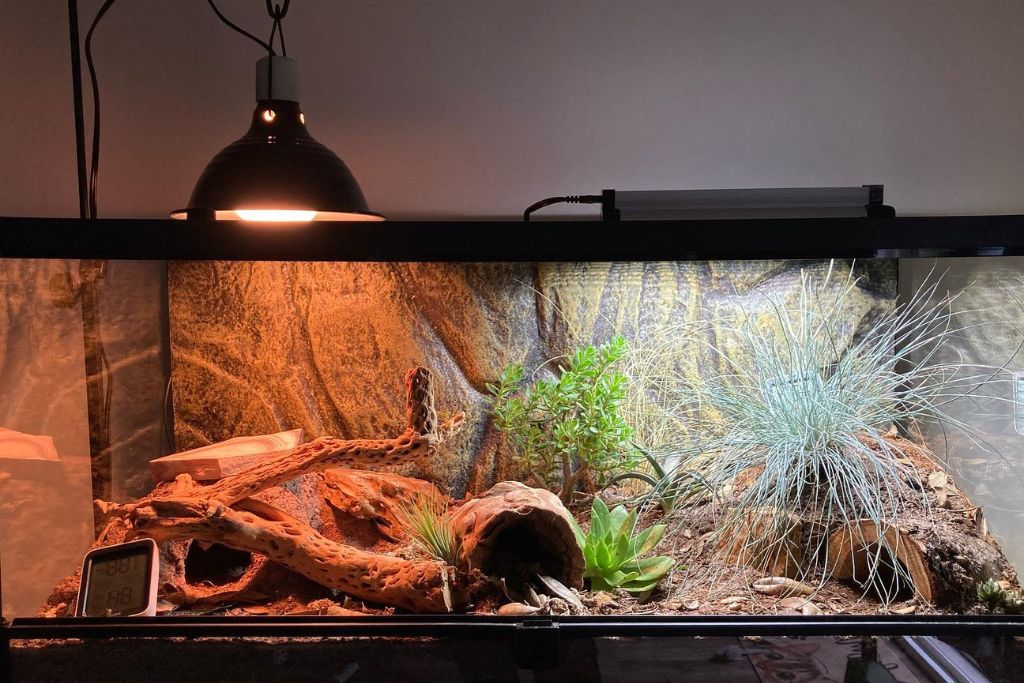
Selecting the appropriate substrate for your leopard gecko’s enclosure is a critical aspect of their well-being and health. Each option comes with its own advantages and considerations. Let’s explore a few common selections:
- Reptile Carpet: A popular choice due to its easy cleaning and reusability. It provides comfort for your gecko to walk on and is safe since they can’t ingest it, preventing digestion issues.
- Paper Towels: A simple and economical option that’s easy to replace when soiled. However, it lacks the same tactile sensation as other substrates.
- Tiles: Sturdy and easily cleaned, tiles offer a natural texture that benefits your gecko’s nails. Be cautious with shiny tiles as they can be slippery.
When deciding on the substrate, prioritize your gecko’s safety and well-being. Consider what suits your gecko’s needs and what’s convenient for you to maintain cleanliness. Above all, ensure your gecko’s comfort and security remain the top priorities.
Hiding Spots and Decorations
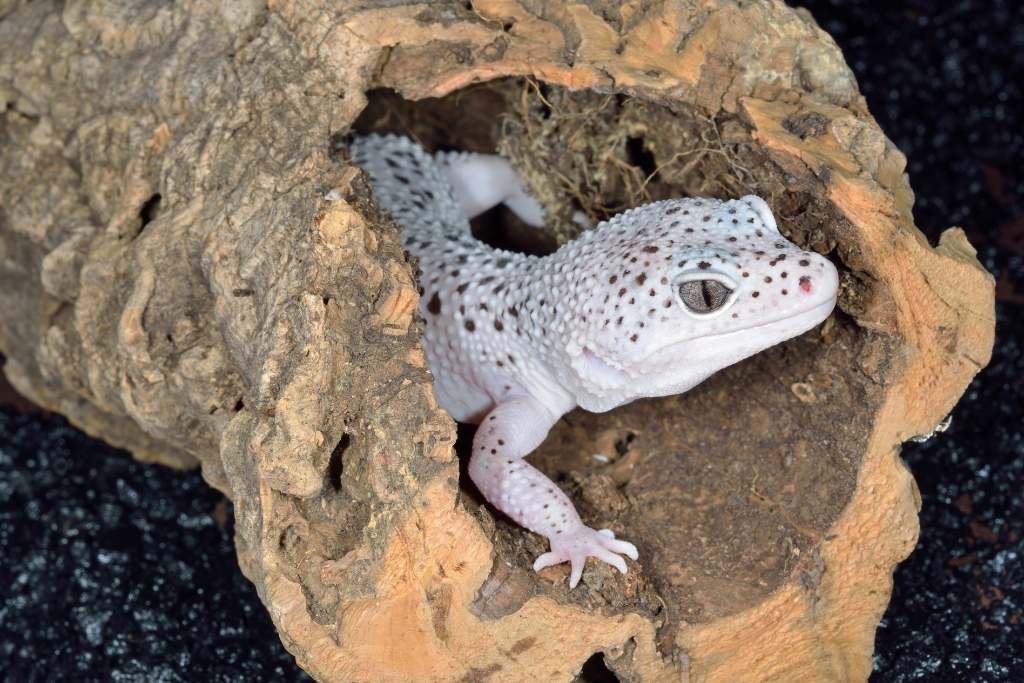
Creating hiding spots is essential, not just something nice to have. They’re crucial for your leopard gecko’s comfort and feeling of being safe.
These animals hide in crevices in the wild to stay safe from predators and bad weather. Copying this in captivity is important. Ensure there are two hiding spots in the tank—one on the warm and one on the cool side.
You can use special hides, cork bark, or coconut shells for these hiding spots. Just make sure they’re safe and in the right places. This lets your gecko hide when they want, which helps them feel less stressed and act more naturally.
For decorations, go for natural and useful items. Put in branches to climb on, fake plants for cover, and small rocks for texture. This makes the tank look good and gives your gecko things to do.
Leopard geckos stay on the ground, so don’t put decorations too high. This could make them fall and get hurt. When you plan the tank with good hiding spots and ornaments, you’re making a place that’s good for your gecko’s instincts and looks nice.
Feeding Dishes and Water Bowl
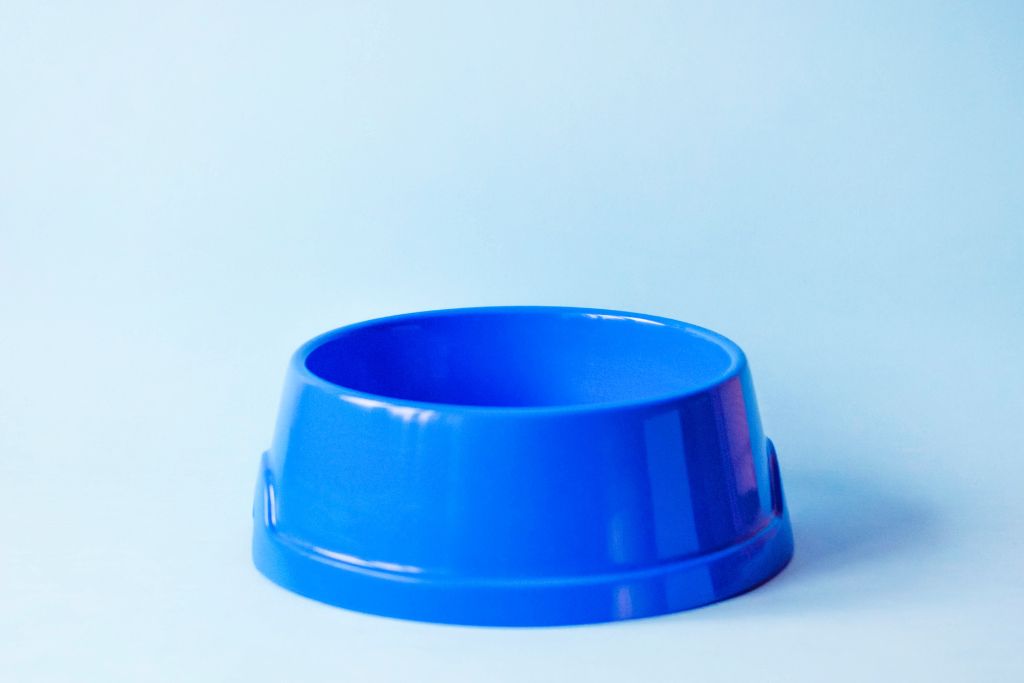
Using proper dishes for food and water in your leopard gecko’s home is really important. It ensures they can quickly get what they need and keeps their space clean. Get shallow dishes for both food and water.
Here’s a tip: Go for dishes with low sides so your gecko can reach without trouble. Use a small, shallow bowl that you can clean and fill up with water easily. Your gecko should always have fresh water to drink.
Choose dishes that won’t fall over and are easy to clean. Ceramic or glass dishes are great because they stay steady and don’t keep smells or germs like some plastic ones. Remember to clean these dishes regularly so your gecko stays healthy.
When you give your gecko the right dishes for eating and drinking, you’re helping them feel good and have a nice home.
Budget-Friendly Leopard Gecko Care: Providing a Comfortable Habitat on a Budget
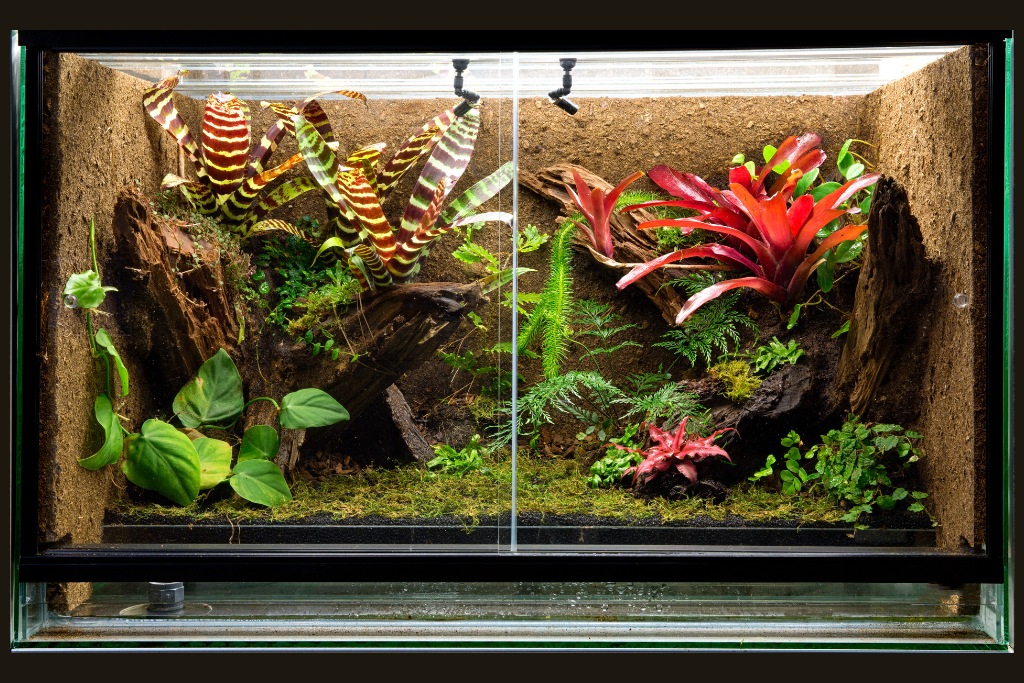
Creating a comfortable and engaging home for your leopard gecko doesn’t need to be expensive. With intelligent planning, you can offer an excellent environment for your pet without overspending.
The enclosure is an initial expense. For a single leopard gecko, a 20-gallon starter kit is a good choice. Look for deals at pet stores or online marketplaces.
Invest in quality heating and lighting equipment upfront. Energy-efficient heating pads and lamps ensure stable temperature control over time. For substrate, affordable options, like paper towels or reptile carpets, work well for your gecko’s safety.
Even with budget options, specific components are essential. Focus on heating, hiding spots, and proper nutrition. By researching affordable choices and repurposing items creatively, you can give your leopard gecko a loving home that fits your budget and their needs.
Sustaining a Healthy Habitat: Maintenance and Upkeep
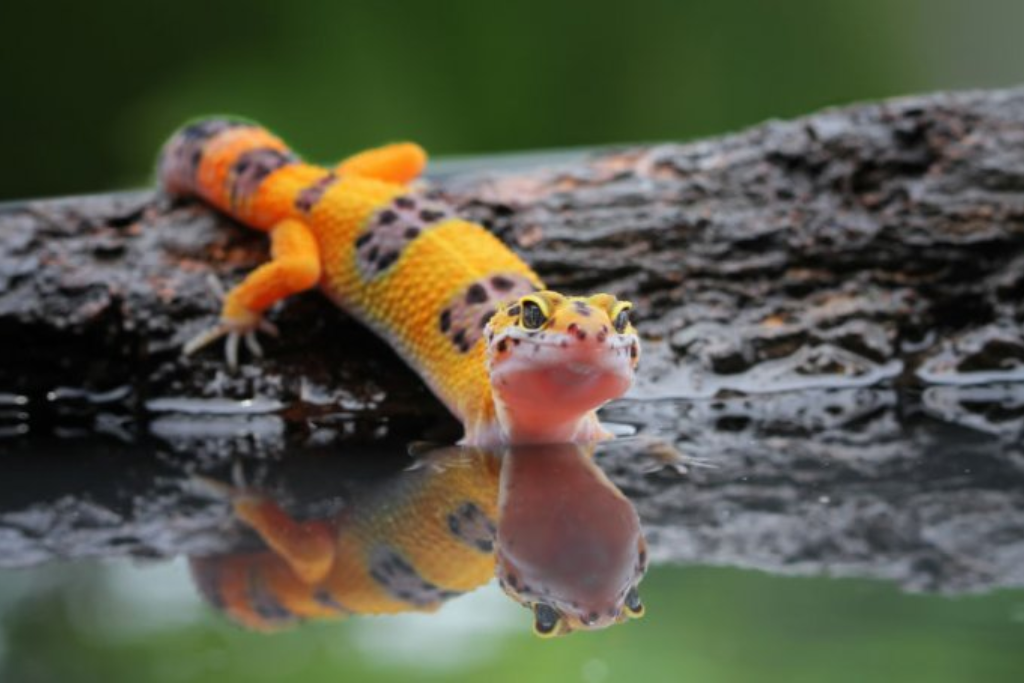
Maintaining cleanliness and proper upkeep of your leopard gecko’s enclosure is essential for their overall well-being and contentment. Here are some concise guidelines to ensure you’re creating the optimal environment for your scaly companion:
- Regular Spot Cleaning: Remove waste and soiled substrate daily to prevent odor and maintain a hygienic environment.
- Deep Cleaning: Perform a thorough cleaning of the enclosure every few weeks, including changing the substrate and cleaning all the decorations.
- Maintain Temperature: Regularly check and adjust heating elements to maintain proper temperature gradients.
- Water Refresh: Change your gecko’s water regularly to provide fresh and clean hydration.
- Health Checks: Monitor your gecko’s behavior, appetite, and appearance daily to spot any signs of illness or distress.
- Vet Visits: Schedule regular veterinary check-ups to ensure your gecko’s health and address any potential issues promptly.
Final Thoughts
As you create the ideal habitat, temperature zones, and hiding spots for your gecko, you’ll soon see the rewards as they thrive. Treasure these moments by observing their distinct behaviors and forging a strong bond with your scaly friend.
FAQs
What Do I Need for My First Leopard Gecko?
You’ll need a 20-gallon enclosure, proper heating, hiding spots, safe substrate, and feeding/water dishes.
What is a Leopard Gecko 20-Gallon Starter Kit?
It’s a suitable enclosure size and setup for a single leopard gecko, providing the necessary space and comfort.
<h3>Where Can I Find the Best Leopard Gecko Starter Kits?
Look for them in reputable pet stores or online marketplaces that offer quality leopard gecko starter kits.

